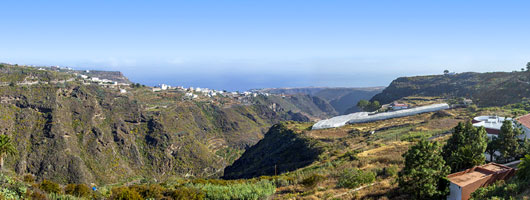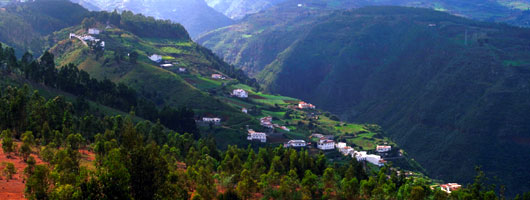From the Azuaje viewpoint, we look out over the mouth of this majestic ravine. The ravine starts out at nearly 1,620 metres altitude, at the highland peaks of the municipality of Valleseco, precisely at the Las Palomas gorge, where it receives the name of Barranco de Crespo. Further on it is called La Virgen, Las Madres, Guadalupe and finally ends up as Azuaje, the point at which it opens out into the sea at San Andrés.

The Azuaje Ravine lies upstream from the Spa, and is a Special Natural Reserve, enjoying significant protective legislation. It is also a Special Conservation Area forming part of the European Natura 2000 network, and is a breeding area for the “rabiche” dove (Collumba junoniae), an endemic dove of the now extinct laurel forest in Gran Canaria since the beginning of last century, within the project framework called LIFE 12/NAT/ES 000354 (LIFE Rabiche).

The steepness of its walls make it the deepest ravine in the north, with a v-shaped profile, typical of the ravines in the area. It has running water all year round, lending it an extraordinary biological wealth. All along it, we can spot a series of endemic species, such as the “Rejalgadera” plant (Solanum vespertino subsp. doramae), growing only here in the municipality of Firgas, plus laurel tree strongholds, and an important willow plantation, among others.
Its name originates from the surname of Francisco de Azuaje, who was the former councilor and sugar cane industrial engineer at the Guadalupe Ravine.
